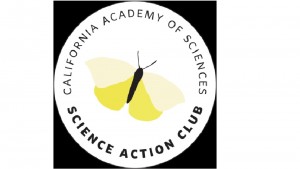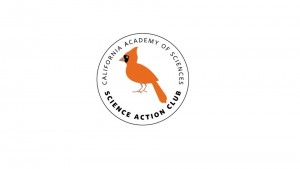Recently, I’ve had the opportunity to take part in a great program sponsored by the California Academy of Sciences. It’s called the Science Action Club. There are actually three different modules, or curricula, available – Bug Safari, Bird Scouts, and Cloud Quest. I was able to receive the training for Bug Safari close to home. At that training I learned that the last Bird Scouts training was being held the next weekend about four hours away. I took the day off, got up really early, and took a road trip across the state to a great interactive museum, called the Discovery Center, to get trained for the Bird Scouts module. It was well worth the drive! I had a great time at the workshop.
For participating in the program and committing to follow through with turning in the requested data and evaluations, I received the kits that accompany each of the modules for which I was trained. The kits are jam-packed with materials and curriculum resources. Nearly everything needed to do each of the 12 programs in the manual is included in the big, durable, stack-able plastic box that arrived in the mail. It even has a cool Science Action Club sticker on the side. The teaching manual is divided into 12 activities, or programs, each of which can last 60-90 minutes, depending on how many participants there are, and how much time is spent on each part of the activity. There are links to videos and other online resources which reinforce or extend the learning next to most of the activities in each of the sections. Each of the activities include games and educational play, a learning activity where participants do some type of experiment, outside observations of nature, animal identification, downloading images or information onto a citizen science site such as iNaturalist or eBird, and discussion about what they discovered or learned each program. In the box are pencils, notebooks, pins, stickers, and certificates for participants, 20 copies of each handout, and all the materials needed to do the programming, including pipe cleaners, string, flash cards, id cards, pictures, posters, and more.
The reusable supplies in the Bug Safari kit include a butterfly net, magnifying glasses, specimen jars/petri dishes, a loupe, pooters (these are cool), scissors, game tokens and pieces, lots of great pictures, and much more. A complete list can be found here.
The Bird Scouts kit is just as complete and fun. It includes such things as binoculars, bean bags, tweezers, identification guides, dice, feathers, game tokens, chopsticks, vegetable oil, dish soap, and much more. A complete inventory of that kit can be found here.
Another really great about the Science Action Club is that it is being changed a bit so that teachers/program leaders can do all of the training online instead of part online, and part in person. That way, even if there isn’t a training session anywhere near you, you can still receive the training and be able to purchase a kit. Right now, the Bug Safari module is the only one available through online leader preparation only, but this is the perfect time of year to go looking for arthropods. And the kit is on sale right now, as well!
Replacement materials can be ordered from the website, so that as they are used up in the programs, they can be replaced. That is a great option that allows the programs to be repeated many times without there being any concern about finding replacement materials that can’t be bought locally (like owl pellets).
The kids and parents in my programs have really enjoyed all of the activities. One activity that was popular was the “build a spider web” challenge. Using pipe cleaners and 10 ft. of string, attendees had to build a spider web that would capture an eraser tossed into it. That turned out to be quite a bit harder than any of the children had anticipated. They tried several different times each, adjusting their web designs and building methods. In the end, the insects won the day, and all of the “spiders” went hungry. I was concerned that some would succumb to the gross factor where the owl pellets were concerned, but that wasn’t the case at all. Only one person left that activity. Others ran out to tell their families and friends what they were doing, and the next thing I knew, the participation in that program had doubled. Some folks didn’t know what an owl pellet was when they walked into the room, but they soon learned, and became very curious about what they might find hidden away in those nondescript little oblong masses of fur and bones. They had a great time searching for bones and using the provided bone charts to identify their discoveries. A couple of participants were quite upset when their grown-ups wouldn’t let them take their bone collections home with them at the end of the program. I assured them that I would take good care of their bones.
I will continue doing Science Action Club programming each week until the beginning of June, when summer programs will take over. Then, hopefully, I’ll get to repeat the SAC in the autumn for a new group of future citizen scientists. I am also looking forward to the Cloud Quest training becoming entirely on-line, so that I can add that to the programs I offer to my library customers.
More information about the SAC and ordering information about the kits can be found here.






Leave A Comment